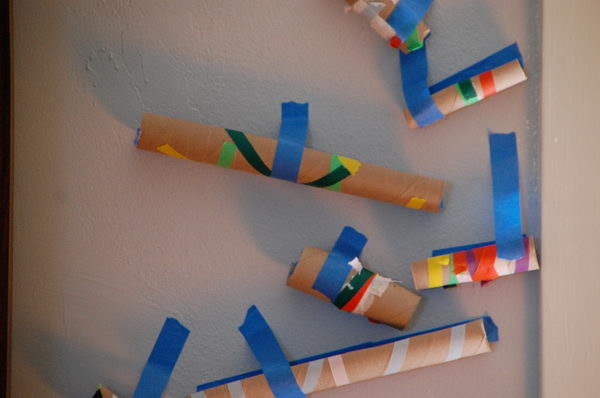Table of Content
Logs can shrink with the weather so make sure you ask for professional advice. In the future you will need to maintain your log cabin by being proactive and performing bi-annual checks using this checklist. If you have used a butt and pass notch technique you will absolutely need to seal your cabin.

You can also look into installing drywall in the interior for more insulation, but it’s not totally necessary. If you’re working with an experienced builder, they’ll probably know this already, but it’s always good to keep in mind. Log homes can easily cost upwards of $30,000, and it’s best to be prepared for the bill. Set aside your money and try to stick to your budget as much as you can to avoid overspending and going into debt.
Log in
Peter prefers the traditional two-sided logs, explaining that flattening only the faces saves hewing time, provides maximum rise from each round , and makes for easier and more efficient chinking. First of all, green logs, while admittedly heavy, are also soft and easy to work, especially with hand tools. Furthermore, dried logs may develop splits that will hinder proper marking, notching, and joining. Finally, individual logs tend to twist as they dry–but if they’re locked into a wall, they ain’t going nowhere. Consequently, a possibility arose that the last few hand-tool-wielding log craftsmen might be allowed to go to their graves with their unique knowledge unshared. While everyone wants a log home as their dream home, few of them really understand the importance of having the right one.
In line with the mantra of “reduce, reuse and recycle”, used pallets are a good source of wood if you have access to them in sufficient quantity. They may not provide sufficient insulation in very cold areas but for mild climates they are useful. If you have friends who know something about tree felling spend time with them getting practical experience – it will be worth it.
What You Need to Know Before Building a Log Cabin
This not only gives the mortar something to cling to, but actually strengthens the walls by helping to prevent both lateral movement and sagging of the logs. Peter used pole skids to raise the walls of his own cabin–but these days he sports a portable winch and derrick rig of his own design. The winch, wound with 1/4 inch-diameter steel cable, is a hand-cranker he scrounged from an old boat trailer. The derrick is a tripod consisting of a 5 inch-diameter hardwood pole braced by a couple of 2 by 4s. At the peak of the boom the cable passes through a pulley block.
Harvest timber from your own property, then create DIY a dovetail jog and you’ll be able to cut logs that will fit perfectly together like a jigsaw puzzle. Cut down the trees on your own land and use them to build this lovely wood cabin. Nothing from the tree goes to waste when building an Alaska style cabin. Individual logsmiths create distinctive touches--wood trusses, doors, etc.--that identify their work.
DOOR AND WINDOW OPENINGS
Of course, that’s not to say that it’s wrong to opt for a continuous foundation–you may find yourself forced to do so by stringent building codes or unusual terrain. But since this discussion is concerned primarily with the more traditional and economical methods of log building, we’ll sidestep talk of preparing a continuous foundation and concentrate instead on the corner pillar technique. The simplest way to frame your windows and doors of a cabin is going to be to cut a notch in the ends and lengths of the logs surrounding your windows and doors that you then put a pre-made board into.
That way, misguided cuts will end in the center of the log, where they won’t show. With the side of the log roughly flattened by notching and juggling, and with score marks every 4 inches to 5 inches along the log , lift the log back up onto the sawhorses and rotate it so that the crown is up. At this point you should have three vertical and parallel lines drawn down each end of the log. Now snap chalk lines to establish the hewing lines along the length of the log. The final step in hewing layout is to rotate the log 180 degrees and snap the two hewing lines down the opposite side of the log. Alter a couple of sturdy sawhorses for log work by cutting shallow Vs into their tops to keep round timbers from rolling.
RAFTERS ROUND OR RAFTERS RECTANGULAR?
Modern log builders use several methods to ensure a weathertight seal at each butt joint. Thru-boltsare generally anchored to the foundation at the corners and every 24 to 36 inches thereafter. A nut and washer are added at the top of the wall and tightened to pull the wall together. Random-lengthlogs do not need to be sorted because they're all the same.
The saddle notch is far and away the most popular notch for use with round logs. A half-moon-shaped notch is cut into the bottom side of both ends of each new log to conform to the curvature of the log it rests on, often with spikes holding the works together. Advantages of the saddle notch include ease of construction and a rustic, pleasing appearance. Disadvantages are a tendency toward loose corner joints and a weakening of the walls due to a third or more of the diameter of each log being carved out at the notches. In order to make broadax hewing easier, it’s necessary to cut the longitudinal fibers of the wood every few inches along the length of the log. Using an ax, strike several scores parallel to and between what remains of each of the original juggling notches.
Now turn the square around, hang it from the opposite side of the log, and make a second mark at the same (6″) line on the square. The midpoint between these two marks is the vertical center of the log. In the formula, we’ll let H represent height, C represent the width of the chinking gap, and R represent rise; we’ll be solving for the common notch depth, which we’ll call D.
You don’t want any leak so be sure to pay attention to details. Coat the cabin with a mixture of linseed oil &turpentine to the outside of the logs – repeat every 5 years. Avoid building in the winter months to reduce log checking, cracking, and splitting. Washing your cabin’s logs will also remove dust, pollen and deposits too.
We know what you need to know, and how to help you get the right stuff to the banks and mortgage companies to speed up the process, saving days and weeks of your precious time. The traditional Appalachian log cabin was one-and-a-half stories high. Often, a couple of winglike additions were tacked on later to cope with a growing family.
Our package cost for a dried in shell would usually cost around 40% of these total costs with the balance set aside for local labor and materials. We have been recognized by radio, newspapers, magazines, television, and professional organizations across this country. We have enjoyed acclaim for projects ranging from simple, tasteful cabins and guest houses… to multi million dollar log and timber home compounds… to stunning restaurants and lodges… to complex multi-unit commercial projects. But most important, we have been recognized by thousands of loyal customers — and we thank them. The process of engineering, CAD/CAM modeling, crafting, delivering, erecting, and constructing one of these wondrous buildings is not easy.
RAISING THE RAFTERS
This notch doesn’t require skill or craftsmanship and minimises settling when building your log cabin. The idea behind the butt and pass notch is to “stack” whole logs without scribing them and using rebar to fix them. Attach floor joists about 14 in apart across the 4 initial logs that you installed previously, using notches to attach each one. Then, lay your flooring planks across the joists to keep them in place and make your floor.

Peter uses a more complex “locking” joint, in which the bottom of each rafter receives a rectangular notch with its lower edge extended in an arc. In position on the roof, the upper corner of the notch in the rafter’s underside forms a V that points straight down and fits into a matching notch in the plate. In English , that means rafter length equals the square root of the sum of the ridge height squared plus half the outside length of the end wall squared . When the tip of the bar reaches the end of the cut, saw straight down. Stop the cut when the bar is halfway through the log, remove the bar from the kerf, rotate the log 180 degrees, and repeat the above steps to finish the cut from the opposite side.

No comments:
Post a Comment